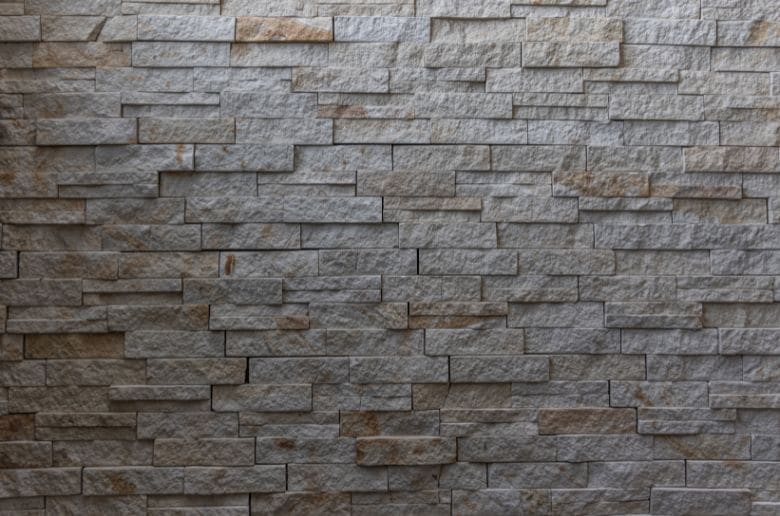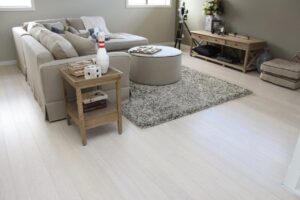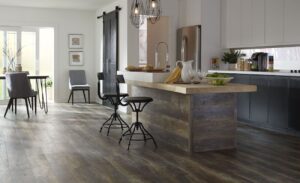The debate between AirStone vs LiteStone is more than just a choice between two building materials; it’s a decision that shapes the character and longevity of your living spaces. Homeowners often face the challenge of finding a balance between aesthetic appeal and practicality.
AirStone offers ease and lightweight application, whereas LiteStone promises authentic textures and increased durability. We must weigh these options against not only our design preferences but also their environmental impact.
With both materials touting benefits like low maintenance and versatility, the pivotal question remains: which aligns best with our project’s needs while also standing the test of time and respecting nature’s balance?
Quick Comparison Between AirStone and LiteStone
| Feature | AirStone | LiteStone |
|---|---|---|
| Material Composition | Ultralight foam material, 80% recycled materials | Lightweight concrete, natural stone, and resin |
| Installation | Simple, adhesive, no mortar/grout needed | More complex, may need mortar/grout |
| Appearance | Mimics natural stone, multiple colors/textures | Authentic stone look, fewer color options |
| Durability | Lighter material, 10-year warranty | Concrete composition, 20-year limited lifetime warranty |
| Maintenance | Low maintenance | Low maintenance |
| Cost | $50-$70/box for 8 sq ft | $70-$90/box for 4-8 sq ft |
| Consumer Experience | DIY-friendly, transformative for spaces | High-end look, low upkeep, cost may be a drawback |
| Availability | Widely available at Lowe’s stores | Availability not specified, likely at home improvement stores |
| Weight | Very lightweight, no structural support needed | Slightly heavier, may require structural support |
| Eco-friendliness | Eco-friendly, uses recycled materials | Does not specify recycled content |
| Versatility | Indoor and outdoor use | Similar versatility for accent walls, fireplaces, outdoors |
| Ease of Use | Easy to install, DIY-friendly | User-friendly, but may require effort for complex designs |
Key Differences Between AirStone and LiteStone
Delving into the particulars of AirStone vs LiteStone unveils fundamental contrasts that shape our selection process for the perfect building material.
Material Composition and Environmental Impact
AirStone is chiefly composed of recycled materials, notably lightweight polyurethane. This makes it a friendlier option for those conscious of their environmental footprint
LiteStone, on the other hand, is a manufactured stone veneer, containing natural stone elements which contribute to a more authentic look but also entail a more significant environmental toll due to quarrying and transportation.
- AirStone:
- Predominantly recycled content.
- Lower environmental impact due to lightweight shipping.
- LiteStone:
- Natural stone components.
- Higher environmental footprint from quarrying and transit.
Note: Choosing materials with a lower environmental impact contributes to sustainable construction practices.
Installation Procedures and Required Skill Levels
When it comes to installation, AirStone appeals to DIY enthusiasts due to its simplicity and the fact that no specialized tools are required.
LiteStone’s installation is more labor-intensive, typically requiring professional skills, tools, and an understanding of stone masonry techniques.
- AirStone:
- DIY-friendly installation.
- No special tools needed.
- LiteStone:
- Professional installation recommended.
- Requires masonry tools and expertise.
Aesthetic Variations and Design Flexibility
Aesthetic flexibility is crucial for personalized spaces. AirStone provides a uniform appearance with its standardized shapes and colors.
LiteStone offers a broader palette of textures and hues, mirroring the variegated patterns found in natural stone. This variety enables designers and homeowners to achieve a more customized look.
- AirStone:
- Standardized appearance.
- Uniform color and shape options.
- LiteStone:
- Varied textures and colors.
- Greater design customization.
Longevity and Durability Expectations
The durability of a material is essential for long-term satisfaction. AirStone, while durable, may not withstand harsh conditions as well as LiteStone, which is known for its robustness against the elements and wear over time.
- AirStone:
- Suitable for interior use and moderate climates.
- May require more frequent maintenance.
- LiteStone:
- Resilient in varied weather conditions.
- Long-lasting with minimal upkeep.
In selecting between AirStone and LiteStone, one must consider these key differences. The decision hinges on a matrix of factors: environmental priorities, installation capabilities, design ambitions, and durability requirements.
Each material presents its set of advantages and challenges, making it crucial to align our choice with the specific demands and goals of our project.
Comparative Analysis of AirStone and LiteStone
We scrutinize the cost-effectiveness and practical aspects of AirStone vs LiteStone to guide informed decision-making.
Cost Comparison and Value for Money
When assessing materials for construction or renovation, the cost is often a decisive factor.
AirStone is generally more cost-effective due to its synthetic nature and ease of installation. LiteStone, while pricier, may offer a higher resale value due to its authentic stone composition. Here’s a breakdown of their cost implications:
| Aspect | AirStone | LiteStone |
|---|---|---|
| Material Cost | Lower due to synthetic makeup | Higher due to natural stone |
| Installation Cost | Reduced by DIY installation | Increased by professional labor |
| Long-Term Value | Dependent on maintenance | Potentially enhanced by durability |
- AirStone provides solid value for those on a tighter budget.
- LiteStone is an investment in long-term property value.
Ease of Maintenance and Cleaning
Maintenance requirements can impact the overall cost and enjoyment of the material over its lifetime. AirStone’s non-porous surface makes it easy to clean and maintain, whereas LiteStone may require sealing and regular cleaning to maintain its natural beauty.
- AirStone:
- Wipeable surface for easy cleaning.
- Minimal maintenance needed.
- LiteStone:
- May require sealing to prevent stains.
- Regular cleaning needed to preserve natural stone.
Weight Considerations for Installation
The weight of the material not only influences the ease of installation but also the structural considerations of the project.
AirStone’s lightweight nature allows for versatility in application without additional structural support. LiteStone, being heavier, often requires reinforced mounting surfaces.
- AirStone:
- Lightweight and adaptable to various surfaces.
- No need for structural modifications.
- LiteStone:
- Heavier, may necessitate structural support.
- Installation limited to load-bearing walls.
Warranty Offers and Consumer Assurance
Warranties provide consumers with confidence in their investment.
AirStone typically comes with a warranty that covers manufacturing defects. LiteStone warranties may cover more, including longevity and weather resistance, reflecting its durable nature.
- AirStone:
- Warranty typically covers manufacturing defects.
- Assurance for the initial quality of the product.
- LiteStone:
- More comprehensive warranty options.
- Coverage may include durability and weather resistance.
Important Note: Always review warranty specifics as they can vary significantly between manufacturers and product lines.
By examining these factors, we gain clarity on the respective merits of AirStone and LiteStone, equipping us with the knowledge to choose not just for the present, but with an eye towards the future sustainability and enjoyment of our living spaces.
Which is Better for Your Project?
We confront the pivotal question of choosing between AirStone and LiteStone for specific project needs.
Assessing the Suitability for Indoor vs Outdoor Use
The intended use environment is critical in the selection process.
For indoor use, AirStone shines with its lightweight and easy-to-modify features, making it a favorite for accent walls and kitchen backsplashes. LiteStone, with its robustness, is often the go-to for outdoor use where elements like weather and wear play a significant role.
| Environment | AirStone | LiteStone |
|---|---|---|
| Indoor | Excellent, given its light weight and ease of installation | Good, but may require more effort and support for installation |
| Outdoor | Good, with weather-resistant options available | Excellent, due to its natural durability and resistance to elements |
- AirStone is ideal for transforming indoor spaces quickly.
- LiteStone stands out for its endurance in outdoor settings.
Balancing Cost with Desired Appearance
Your budget and the desired aesthetic outcome must strike a balance. If cost is a limiting factor, AirStone offers a cost-effective solution with a broad range of styles.
However, for an authentic stone appearance, LiteStone, despite the higher cost, provides an upscale look that can enhance the value of any property.
- AirStone:
- Affordable with various design options.
- Less authentic stone appearance.
- LiteStone:
- Higher cost aligns with a premium natural look.
- Potential to increase property value.
Weighing Durability Against Ease of Installation
Durability is a prime consideration, particularly in high-traffic areas or exterior applications.
LiteStone’s resilience is unmatched, but this comes at the cost of more complex installation. AirStone offers ease and flexibility in installation but may not withstand the test of time as effectively as LiteStone.
- AirStone:
- Easier to install with basic tools.
- May require more frequent replacement or repair.
- LiteStone:
- Superior durability.
- Installation may necessitate professional services.
Final Thoughts on Making an Informed Decision
The decision between AirStone vs LiteStone hinges on individual project requirements and priorities. For quick, budget-friendly updates, AirStone is unparalleled. For enduring beauty and long-term resilience, LiteStone is the exemplary choice.
Important Note: Your unique situation dictates the best option. Consider the specific conditions and intended use to make the most informed choice for your project.
Our examination reveals the distinct scenarios where each material excels, providing a roadmap to the most appropriate selection. Ultimately, the choice rests on aligning material attributes with project goals to ensure satisfaction with both the process and the final result.
Conclusion
We’ve dissected the distinct features that set AirStone vs LiteStone apart. As we present our recommendations, remember that the suitability of each depends on your specific situation.
For ease of installation and cost-effectiveness, AirStone stands out, while LiteStone is the choice for durability and a premium finish. Seek out trusted retailers for your purchase, and ample information is available online for further clarity.
We urge a thorough personal assessment to ensure the choice you make is the perfect fit for your project’s needs and your long-term satisfaction.





